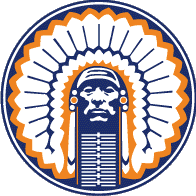DATE: Monday / April 4, 2005
GAME: North Carolina 75, Illinois 70
LOCATION: Leal Park & Chief Shemauger Park (City of Urbana / Champaign County, Illinois)
SUBPLOT: Told to “Git”
"In the summer of 1832, before the organization of the county and the fixing of its county seat – when the site of Urbana was perhaps only what it had been for generations before, an Indian camping ground – a large number of Indians came and camped around the spring above alluded to as situated near the stone bridge. It happened to be at the time of the excitement caused by the Black Hawk War, and caused not a little apprehension among the few inhabitants around the Big Grove, although the presence in the company of many women and children of the Indians should have been an assurance of no hostile errand. A meeting of the white settlers was had, and the removal of the strange visitors determined upon as a measure of safety. A committee consisting of Stephen Boyd, Jacob Smith, Gabe Rice and Elias Stamey was appointed by the white settlers and charged with the duty of having a talk with the red men. The committee went to the camp and, mustering their little knowledge of their language, announced to the Indians that they must “puck-a-chee,” which they understood to be a command to them to leave the country. The order was at once obeyed. The Indians gathered up their ponies, papooses and squaws and left, greatly to the relief of the settlers." (92-93)
A STANDARD HISTORY OF CHAMPAIGN COUNTY ILLINOIS / Edited by J.R. Stewart / 1918
RATIONALE: The premise is simple: I listened to the 2005 NCAA men's basketball tournament games at various sites around east-central Illinois that are historically relevant to the ongoing controversy over Chief Illiniwek, the "racist mascot" or "honored symbol" of the University of Illinois at Urbana-Champaign. I consider these "listenings" to be provisional and performative memorials - attempts to reconcile popular claims of "honoring native heritage" with specific histories that problematize the ways in which this act of "honoring" operates. These histories have, for the most part, been overlooked and/or diluted by our collective sense of guilt. As a result, they remain absent from the "official" versions of the heritage that we stubbornly retain and celebrate. I aim to spatialize the discourse around Chief Illiniwek by attaching concrete spatial and historical signifiers to a self-referring sign, which has for too long been confined solely to the athletic field.
CONTEXT: Chief Illiniwek / Honoring WHAT?
Retire?
http://retirethechief.org
http://www.prairienet.org/prc/prcanti.html
http://www.inwhosehonor.com/
http://www.aimovement.org/ncrsm/index.html
http://www.inwhosehonor.com/documents/GONE.HTML
http://www.tolerance.org/news/article_tol.jsp?id=972
http://members.aol.com/Nowacumig/logos.htm
Honor?
http://www.chiefilliniwek.org/
http://www.honorthechief.org/
http://chiefilliniwek.blogspot.com/
http://www.chiefilliniwek.org/phoenix/library/historic-photos.html
http://fightingillini.collegesports.com/trads/ill-trads-thechief.html
Where did you listen?
http://www.retirethechief.org/dialogue.html
http://www.will.uiuc.edu/am/projects/chiefilliniwek/features.htm
http://directory.google.com/
http://www.uiuc.edu/admin2/nca_report/part1/third_party.html
